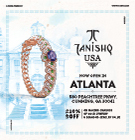Shoe Done It?
It is a myth that shoes cause most of the problems that our feet develop like bunions, hammertoes, and corns. If it were true that shoes caused all of these problems, everybody who wore shoes should have the same problems and everyone who went around barefooted would never develop any
Foot problems. Studies have been done in Africa as well as the Australian Outback on various tribes who never wear any type of shoe. These studies showed that in fact these groups had a lot of the same problems we do with one noticeable exception. Most of the problems were not significant, however, because the shoes were not present to irritate deformities like bunions.
Most non-traumatic foot problems are hereditary. Like other parts of our bodies that we inherit from our parents, we also inherit the bone structure that makes up our feet and therefore the problems that go along with them. So you can thank your mother for your brown eyes and your bunion.
Traumatic foot problems like stress fractures, tendonitis, and over use injuries, can often be related back to improper shoe gear. Someone who stands all day on concrete or walks around in high heels is bound to develop more problems than someone who sits at a desk all day or works in sneakers. The types of shoes you wear have a big effect on the amount of Stress your foot has to absorb.
Shoes are not to be blamed for your foot problems. Shoes you select that are not comfortable or suited to your foot will definitely aggravated any problems you may already have. Select shoes that are supportive and comfortable.
______________________________________________________________
These Boots are made for Working
In highly industrial society such as the US many of hard working Americans has strict regulations on the shoes they are to wear while at the work place. Naturally one cant go to work bear footed therefore here are some helpful tips we like to give people whom work in certain hazards and shoe modification they may wish to make:
Hazard: electric current, static electricity, high voltage areas, and areas with a lot of sparking or molten metal.
Protective Measure: Shoes or boots with rubber or cork soles and heels, no external������������������ metal exposed, foundry boots with elastic sides or (that get in side shoes) quick release buckles foe speedy removal, and insulated steel toes
Hazard:��� wet or slick surfaces
Protective Measure: lined rubber shoes or boots, rubbers or shoes of silicone-treated leather, soles of rubber or neoprene soles, strap on cleats for icy surfaces, or non skid sandals that slip over shoes.
Hazard: falling or rolling objects, cuts, and punctures.
Protective Measure: steel toe safety boots, add on devices such as metal guards, puncture proof inserts, and shin guards
Hazard: Chemicals and solvents
Protective Measures: footwear with synthetic stitching made of rubber, vinyl, or plastic
Hazard: extreme cold
Protective Measure: footwear with moisture or oil resistant insulation that can repel water, and insulated socks
Hazard: Sanitation and contamination
Protective Measure: plastic shoe gear with wood or rubber shoes
Remember accidents do happen so always remember to notify the supervisor promptly for first aid, because hiding the situation may lead to unwanted consequences or as always consult your family doctor or podiatrist if there are any concerns.
_______________________________________________________________
Dr. Ketan B. Patel born and raised in Atlanta has been an active member of the American and Asian community for most of his life. Dr. Patel attended his formal training at the University of Georgia and the Ohio College of Podiatric Medicine (an affiliate of the Cleveland Clinic). His served his residency in Baltimore, Maryland at prestigious institutes such as Bon Secours, John Hopkins, University of Maryland, and Union Memorial Hospitals. His interests include Sports medicine, Occupational medicine, Geriatric care, Diabetic care, Pediatric care, Biomechanics and Surgery of the foot, ankle, and leg. Fluent in English, Gujarati, and Hindi Dr. Patel can help you in any of his three offices in Conyers, Southlake, or College Park (Airport). For more information feel free to contact him at 404-768-FEET (3668).
Enjoyed reading Khabar magazine? Subscribe to Khabar and get a full digital copy of this Indian-American community magazine.
blog comments powered by Disqus











